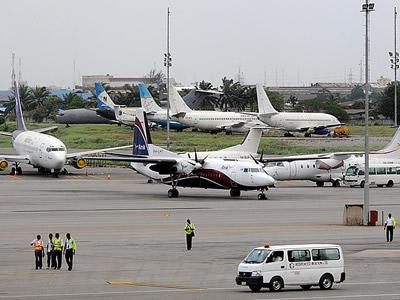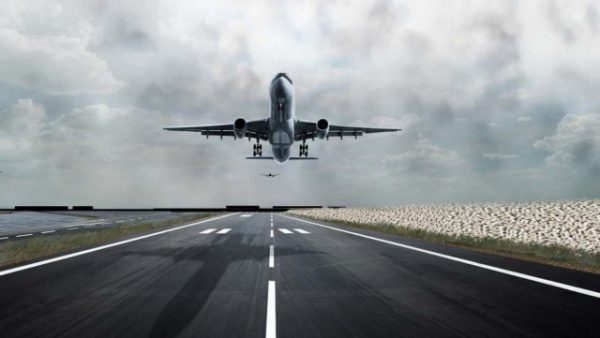Improving Aircraft Reliability And Safety

If there’s one situation where we expect total reliability, it’s when we’re about to board an airplane. Aircraft reliability is a function of an organizational culture that supports people working in a disciplined way to perform many different activities: preventive, predictive and planned maintenance, scheduled maintenance on a routine and scheduled basis, trending identified potential failure modes, extrapolating a forecast failure date and completing a quality repair before a failure occurs. A closer look at aircraft reliability provides a good example of a proactive culture in pursuit of continued and constant reliability.
Pre-flight Checklists
The beginning of each flight is a study in the reliability effort of the aircraft industry. A glance into the cockpit upon boarding will confirm the focus on reliability. The first officer will have already completed a visual walk-around of the aircraft to verify proper lighting and look for loose panels and rivets, discrepancies and malfunctions of the landing gear and tires, fuel and hydraulic leaks, and other obvious defects. The pilot and first officer will be performing the pre-flight checklist in a concerted and participative partnership. This checklist is to ensure the safe and reliable operation of the aircraft for the initiation of the flight, since it is considerably easier to repair a malfunction of an aircraft system on the ground.
Starting with the first test flight after it rolls off the assembly line and continuing for the rest of the life span of the aircraft, this is the beginning of the aircraft reliability effort. The pre-flight checklist inspections are performed without fail, prior to the aircraft moving from its parked position. The checklist points are verified individually and any deviation from prescribed function is corrected before flight.
Training
The flight crew is trained extensively on these procedures and then tested routinely to ensure continued mastery of the process. This allows consistent response to an unexpected system failure in a safe, controlled and accepted methodology. Aircrew training is routine, recorded and verified through hands-on, demonstrated skill testing. Aircraft handling skills are trained in specific aircraft simulators to ensure ongoing competency and capability of the flight crews. The entire crew is trained and tested in the application and function of defined emergency procedures to ensure passenger safety and welfare.
Tracking Data over Time
Then we have the many things that we, as passengers, do not see and may not be aware of. Each aircraft has a phased inspection that is time-based, with specific inspection points and requirements, influenced by manufacturer testing and historical data. Data has been gathered, analyzed, and dissected in order to ensure that you, the passenger, get to your chosen destination safely and on time. Routine repairs are recorded, with any information that was discovered on the work order retained for analysis and data mining and trending. Software systems have been developed to utilize this information to enhance aircraft reliability and safety.
Inspections for Compliance with Established Reliability Standards
The programmed preventive inspections, including the pre-flight walk-around and the pre-flight cockpit checklist, were developed from the historical data recorded, analyzed and critiqued over time, from the repairs and investigations of failures. There are specific points that must conform to specific standards for the aircraft to be judged airworthy and safe. This data is recorded in a database for retrieval to enable consistent reliability and to develop techniques to improve on the existing reliability. The programmed preventive inspections are designed to catch the small problems before they become large and possibly uncontrollable problems that result in a crisis. Each preventive inspection work order defines specific equipment assets of the aircraft to be inspected and measured against specific data specifications, and either accepted as within the reliability parameters or rejected as being out of the reliability parameter specification. Based on the specific aircraft criteria, a rejection can result in the grounding of the aircraft or possibly the grounding of all aircraft of that specific model.
Phased inspections are based on time and observation. Given standard utilization, the phased inspections are performed at a specified time interval. The more detailed and intense inspections will require the aircraft to be stripped of things that make the flight comfortable and attractive, reducing the airframe to an almost skeleton. This allows the use of inspection techniques for non-destructive testing methodologies to detect wing root weaknesses; frayed electrical, instrument and control wiring; weakened, cracked or deformed hydraulic hoses and pneumatic tubing; loose rivets; and many other components that may indicate impending failure.
The engines are removed, dismantled, measured, weighed and inspected to ensure there is no deviation from design in any manner of measurement, and reassembled within the design parameters. Most commercial aircraft are designed to have sustainable flight with half the engines working. However, no one wants to experience this situation, even though in the aircraft simulator these problems are induced and, the aircrews tested, trained and practiced in keeping the aircraft in the air. Hence the extensive attention to detail in the overhaul of aircraft engines!
Reliability and Safety Are Important To Every Business
All aircraft manufacturers and airlines are in the business of making money. The media is quick to publicize news of any aircraft that does not reach its intended destination. Most of the people I know will choose to fly on an airline that utilizes the most reliable aircraft. They will choose an airline with reliably excellent equipment and mediocre personal service and comfort over an airline with excellent service and personal comfort and mediocre reliability.
Aircraft reliability and safety have improved over the years through open and honest communication, functional cooperation in sharing newly discovered problem information, and cooperation in sharing gained knowledge of existing problems pertaining to reliability and safety. Each manufacturer protects its proprietary information to maintain a competitive edge, which is understandable, since they are in the business of making money in order to remain in business. Now imagine where the aircraft industry would be today without the level of partnership necessary for effective communication, cooperation and coordination of safety and reliability. Should any one manufacturer be perceived as lacking reliability, the human mind will consider all manufacturers suspect. The human rationale expects reliability and safety, either consciously or unconsciously, and a level of communication, cooperation and coordination is necessary to the overall success of the industry.
Attention to detail and trending the information gathered in the preventive and predictive inspections, along with the well-defined programmed maintenance of aircraft world-wide, is what enhances the reliability of the aircraft we travel aboard. Regardless of where the aircraft is based, there really is no difference in the requirements involved for safe and reliable flight or the level of attention to detail. The preventive and predictive maintenance inspections are done at the required intervals based on best practices in the aircraft industry.
From the mining of the raw materials to the operation of the aircraft in flight, people are paying attention to the intricate details necessary to maintain a very high level of reliability. This high level of reliability reinforces our confidence as we board the aircraft. Seeing the flight crew in the cockpit performing the checklist and knowing they have the requisite attention to detail and training and capability makes for a relaxing flight.








